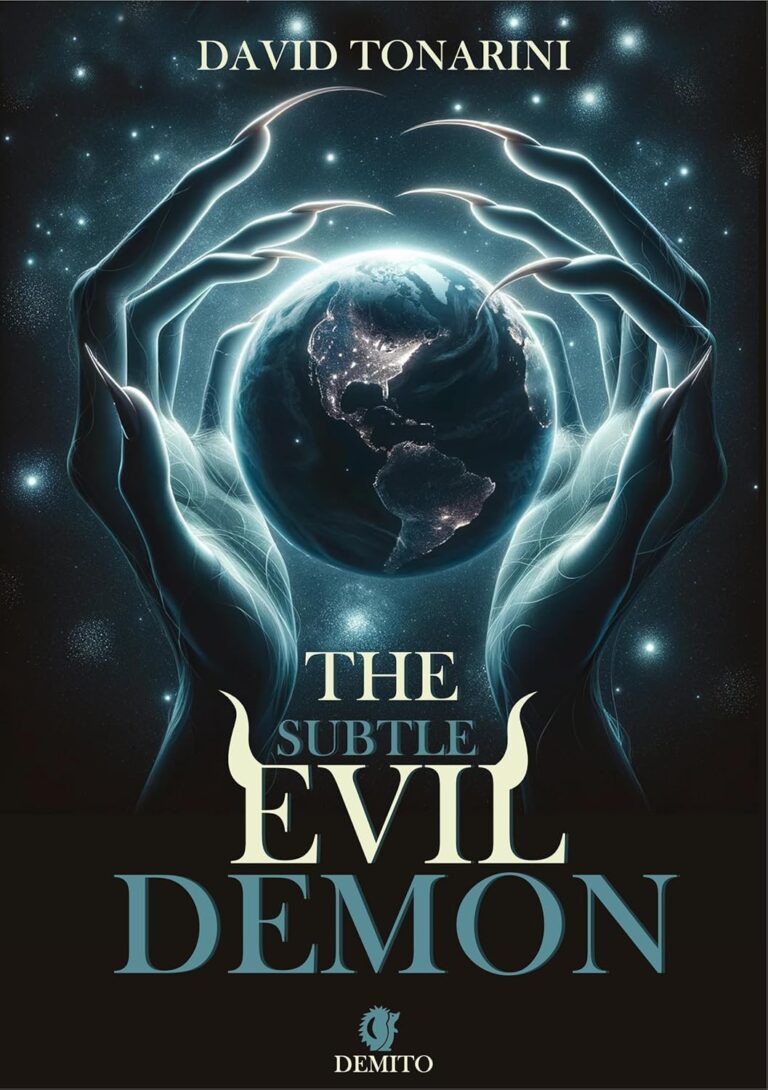
Did you ever wondered why is the sky blue? I bet you did. As children, we wonder about anything, don’t we? Some of us, eventually, stop asking. Some other, maybe the more “sciency” ones, think they have been told the right answer in school (spoiler: that’s not the right answer). And then they stopped wondering too.
As it turns out, very few people know the actual reason why the sky is blue. And the real answer is surprising and mindblowing…
In these pages we discussed multiple times how a large part of our perception is illusory. We already described a stunning example of how what we can see right in front of our eyes that what we consider to be “perception” is actually a creation of our brain. We have pointed out as something as obviously “real” as colours is, in fact, technically speaking illusory.
Yet, actually the most blatant example of this is right in front of us all of the time every day. The reason we see the sky as blue is simply that… our brains are designed to see it that way. Not because it is objectively blue. In fact, as it turns out, it is not!
You may already be familiar with the explanation that follows, especially if you are at least a bit a «sciency» person. As we’ve already discussed, different colours are due to different wavelengths of light. More specifically, at the highest wavelength you have red light, while you go through a variety of colours towards blue and violent. That’s why, as you move outside the visible range, you have respectively infrared and ultraviolet, thus these colour being the borders of what you can see. You are probably also familiar with the fact that white light is actually a combination of all «colours», and that when a beam of white light passes through a prism it will be scattered in its components. This is because a light of any given colour «bends» differently, depending on its wavelength, when it passes through different objects. You can also witness the same things any time you see a rainbow, which in fact is the usual white light coming from the sun being scattered by water particles in the atmosphere (working indeed like a prism). In all cases, the colours distribute in the same fashion, going from red at one end to blue and violet at the other. The seven most commonly recognized colours are «encoded» in mnemonics like Richard Of York Gave Battle In Vain, where the first letter of each word remember us the fixed sequence Red, Orange, Yellow, Green, Blue, Indigo and Violet. There is then a process called Rayleigh scattering by which, similarly, electromagnetic radiation is scattered by particles smaller than its wavelength. In the case of sunlight, the particles present in the atmosphere scatters more the shorter wavelengths (blue and violet) than longer wavelengths (red and yellow). So as we look in a direction of the sky away from the sun, we see those wavelengths that are bent the most. You can notice this even more clearly at sunset, as we see red and orange colours because the blue light has been scattered out and away from the line of sight.
[xyz-ihs snippet=”evil-demon-excerpt”]Now, all that’s fine and interesting, and it is the whole explanation usually given in science classes or discussions. But it begs a question. Why is the sky blue, then, rather than violet, given that violet is indeed the colour with the shortest wavelength? Well, that’s a bit a tricky question that, as you may expect in this book, has more to do with our minds than it does with physics. It turns out the sky actually is somehow violet. Sort of, at least. More precisely, the light of day is actually a complex spectrum of many different wavelengths, but it is dominated indeed by the ranges around blue and violet.
Let’s now think again of what we discussed about the human eye. We have three different cells dedicated to colour vision, which roughly correspond to blue, green and red. From a physiological perspective, all the information about colours that your brain will ever receive is due to a specific combination of the responses of these three cells. In other words, whenever these three cells respond in a specific pattern, you will perceive the same colour, no matter what actually caused that pattern to fire in the first place. In fact, if you have ever «seen stars» after a blow to the head, that happened because mechanical pressure from the blow stimulated some of your light sensitive cells, «simulating» rays of white light. Now, each of this cells have a bit a different behaviour and different responses to different wavelengths of light. The «blue» cell, for example, respond more intensely to blue light, but a weaker response is solicited also by different wavelength around that peak. Importantly, the three cells are sensitive over broad, overlapping wavelength ranges, which means different combinations of light can produce the same response. Consider the colour «yellow». You could produce this colour with rays of light with a very narrow wavelength (around 570 nanometers). This kind of light would cause a given response in each of your three cells, with the «blue» one being inactive, the «green» one being rather active and the «red» one being pretty active. But, if that’s the case, you should be able to obtain the very same response by hitting the eye with a combination of red and green light (with no yellow light at all) that happens to activates each cells just in the same way. That’s exactly what happens indeed. Two different spectra (combinations of colours) that elicit the same response from the three different cones are called metamers.
Now that we know this, we can tell why the sky looks pale blue instead of a combination of dark blue and violet. The same effects that makes red and green light turn into yellow is responsible. The sky’s complex combination of light of different wavelengths dominated by violet and blue, as it turns out, elicits the same responses in each of the tree colour cells as a combination of unsaturated blue light (that is, purely blue light together with white light). Or, if you fancy, the two are metameric. Long story short, thus, the sky doesn’t look blue because it is actually blue. Simply, your eyes can’t tell the difference between a mixture of pure blue and white light (the colour you perceive the sky to be) and a complex spectrum of many different wavelengths dominated by dark blue and violet (the «real» colour of the sky).
For a similar reason, there are impossible colours, which our eyes are unable to see. I’m not now referring to ultraviolet, infrared or other electromagnetic radiation which is outside the visible range, but the spectra that are within it, but you cannot perceive. This has again to do with the concept of three colour cells responding to given combinations of light, but it is related to a second processing layer that occurs after that first one. At this second layer, some filters are applied to the information coming from the retina. There are three filters that combine the input from each of the three cell in a different way. One simply sums the signal, and it provides thus the perception of overall brightness or darkness. The other two are responsible for what is called opponent process. When you were a kid and you were taught about «primary colours» and the «colour wheel», you have probably been told that yellow is the opposite of blue, and that red is the opposite of green. That’s basically what these two filters do. The first combines in an antagonistic matter the information from «red» and «green» cells. This means that it response to the difference among them, rather than to the absolute strength of the response of each. Say, for example, you measure the response of each cell with a number between 0 and 100. Now, suppose you are seeing a spectrum that combines pure red light (red = 100) with a little of green light (green = 25). Now, say you are seeing a second spectrum which combines a slightly less strong red (red = 75) with no green (green = 0). Because of this opposing filter, both colours are perceived in the same way, as the difference is the same. The second filter does the exact same thing, but it opposes the strength of the blue cell with both green and red ones (which equals to yellow). That’s why «blue is opposite to yellow» and «red is opposite to green». That’s also why you can’t see something you would describe as a «greenish-red» or a «yellowish-blue». It’s not that such colours «do not exist», but because your perception is wired in a specific way that cancels them out. Interestingly, there is a way to learn to see such colours (even if you don’t happen to have tetrachromacy). Scientists were able to achieve this by having people staring at adjacent opposing colours. Given enough time, the border between the two would dissolve and a new «forbidden» colour would emerge. Subjects were amazed and had great difficulty even describing these new colours2. As this book is printed in black and white I can’ t give you a sample directly, and there are several details to make this work well (in fact this phenomenon have puzzled researchers for a while, as only in certain cases the experiment was successful), but if you want to test it for yourself search the internet for something like «how to see impossible colours» and you should be able to find several videos or articles with instructions on how to make it work. Some procedures work better than other, some take a bit more time, but I definitely recommend to try ( one example here): it really is worthy, buffling and mesmerizing to see something you’ve never perceived before!
This post is a free excerpt from my book.
Click here to read more free excerpts from this book, or see the book’s main page “The (Subtle) Evil Demon“.
You can purchase “The (Subtle) Evil Demon” on Amazon, available in Kindle edition, Paperback and Hardcover!









+ There are no comments
Add yours